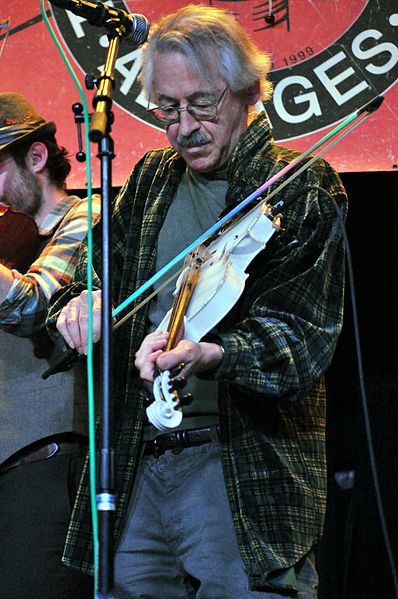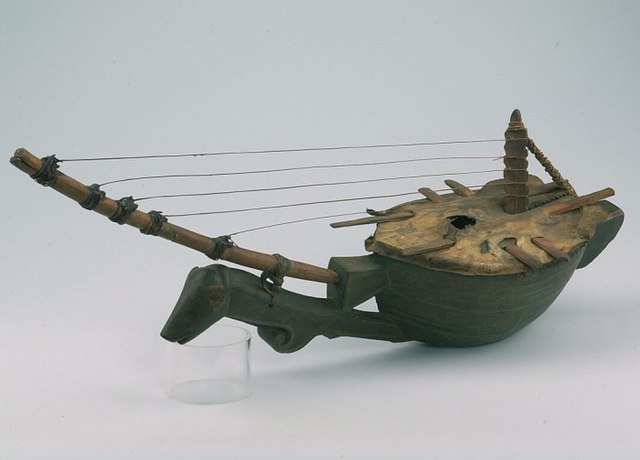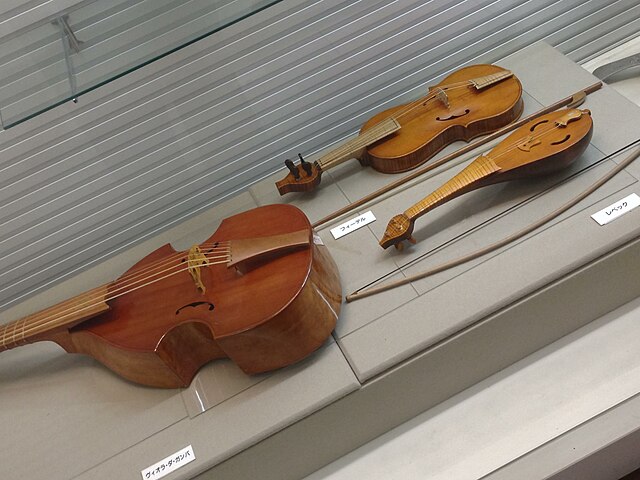A fiddle is a bowed string musical instrument, most often a violin. It is a colloquial term for the violin, used by players in all genres, including classical music. Although in many cases violins and fiddles are essentially synonymous, the style of the music played may determine specific construction differences between fiddles and classical violins. For example, fiddles may optionally be set up with a bridge with a flatter arch to reduce the range of bow-arm motion needed for techniques such as the double shuffle, a form of bariolage involving rapid alternation between pairs of adjacent strings. To produce a "brighter" tone than the deep tones of gut or synthetic core strings, fiddlers often use steel strings. The fiddle is part of many traditional (folk) styles, which are typically aural traditions—taught "by ear" rather than via written music.
A morris dance fiddler playing a fiddle.
Fiddlers participating in a session at a pub in Ireland
The folk music band JPP at the 2015 Kaustinen Folk Music Festival in Kaustinen, Finland
Peter Stampfel from The Holy Modal Rounders
In musical instrument classification, string instruments or chordophones, are musical instruments that produce sound from vibrating strings when a performer plays or sounds the strings in some manner.
Bow Harp or Harp Lute, West Africa
Hellenistic banquet scene from the 1st century AD, Hadda, Gandhara. Lute player far right.
Spanish stele of a boy with a pandura.
Viol, fidel and rebec (from left to right) on display at Amakusa Korejiyokan in Amakusa, Kumamoto, Japan








